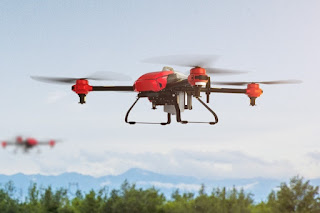|
Come to us for all your training and certification requirements for drone spraying and application of chemicals by UAV. Background Additional rules and regulations govern the application of agrichemicals by UAV. The Civil Aviation Authority requires that any person using a UAV for the aerial application of agrichemicals is certified under Part 102 of the Civil Aviation Rules. In addition, the Hazardous Substances (Hazardous Property Controls) Notice 2017 requires that the aerial application of highly ecotoxic agrichemicals by unmanned aircraft is only performed by a "person ... operating under the authority of, and in accordance with the terms of, a valid unmanned aircraft operator certificate under Part 102 of the Civil Aviation Rules". This provision applies to class 9.1A, 9.2A, 9.3A or 9.4A pesticide or plant growth regulators and certain other agrichemicals specified in section 62 of the Notice. The size of any drone that can carry a useful spray payload means that your drone will exceed 15kg at take-off. This means that in order to fly the drone you must be authorised by a person or organisation approved by CAA. Pilot Training and Qualification As you will be spraying ecotoxic chemicals, CAA will require that you have appropriate chemical training. You will require:
UAV Agricultural Rating This advanced course is for a person who intends to use a UAV for the aerial application of agrichemicals. Separate ratings (and training) are available for:
Pre-requisites to obtain a spraying or topdressing rating are are:
A UAV Aerial VTA rating requires the candidate to already hold a spraying or topdressing rating and have a level of practical experience approved by the CAA. To proceed to the practical application of agrichemicals within the course, CAA will also require the candidate to hold or be operating under a Part 102 certificate that includes the privilege of aerial agrichemical application. Clients Our clients for agrichemical application by drone include:
Additional Resources Key New Zealand Resources:
|



|
|
|
||||||||||||||||
|
||||||||||||||||




